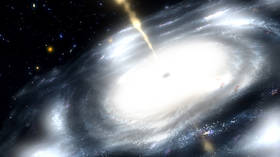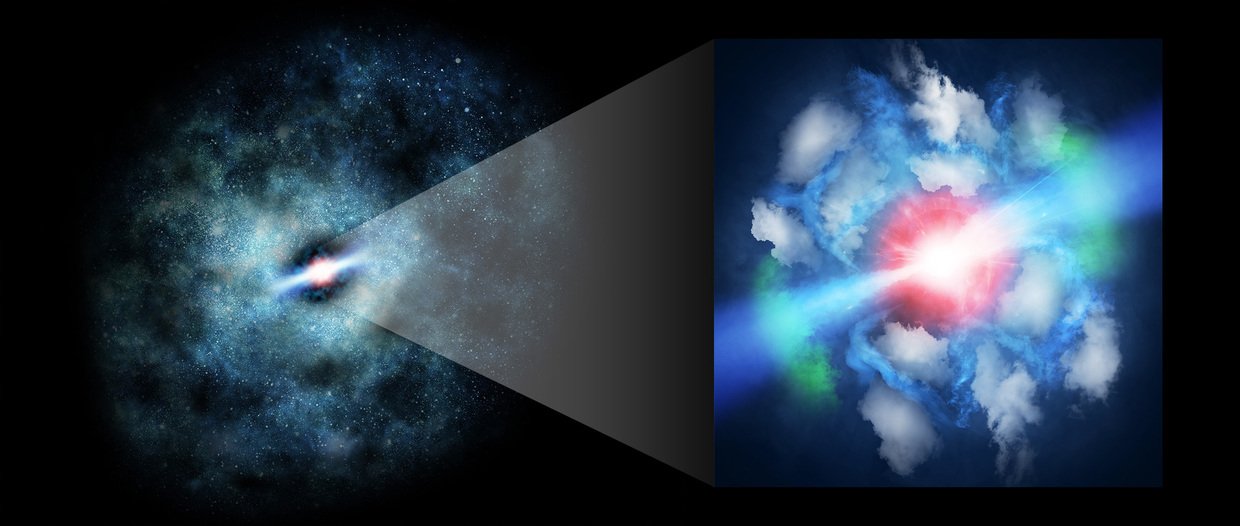Astronomers observe jet-firing SUPERMASSIVE BLACK HOLE from the early universe

Astronomers have managed to capture a supermassive black hole firing out streaking jets of plasma after hungrily devouring matter in its vicinity, in a development that promises to cast light on early galaxies.
The observation is made even more impressive by the fact that the supermassive black hole sits in the heart of a galaxy a staggering 11 billion light-years away. So, the light the boffins observed dates back to the early days of the Universe, when it was a mere three billion years old.
The breakthrough was possible thanks to the peculiar process of gravitational lensing. Because another massive galaxy sits between us and the source of the light, gravity bends and magnifies the origin galaxy and allows it to be seen in much greater detail.

“This distortion works as a ‘natural telescope’ to enable a detailed view of distant objects,” explained Takeo Minezaki, one of the researchers from the University of Tokyo.
Using the ALMA astronomical interferometer and taking advantage of the lensing allowed the scientists to obtain exceptionally sharp vision, 9,000 times better than human eyesight would allow.
The observations promise to cast light on the mystery of how galaxies evolved in the early Universe. One remarkable feature that was observed was that the supermassive black hole in the galaxy’s center had recently - at least in cosmic terms - violently spewed out enormous jets of plasma.
Observing the interaction between black hole jets and the gaseous clouds they leave in their wake is crucial to learning more about how galaxies evolve.

The exceptionally clear images enabled the scientists to learn the distribution and motion of the clouds. They found that the wisps created by the gigantic jets have a violent motion, with speeds as high as 600 kilometers per second. This led them to the conclusion that they witnessed the very early phase of jet evolution in the galaxy.
“We found telltale evidence of significant interaction between jets and gaseous clouds even in the very early evolutionary phase of jets. I think that our discovery will pave the way for a better understanding of the evolutionary process of galaxies in the early Universe,” the study’s lead author, Kaiki Inoue, said.
The research is published in the Astrophysical Journal Letters.
Also on rt.com Two stars merging created iconic blue SUPERGIANT supernova in a galaxy next doorLike this story? Share it with a friend!











